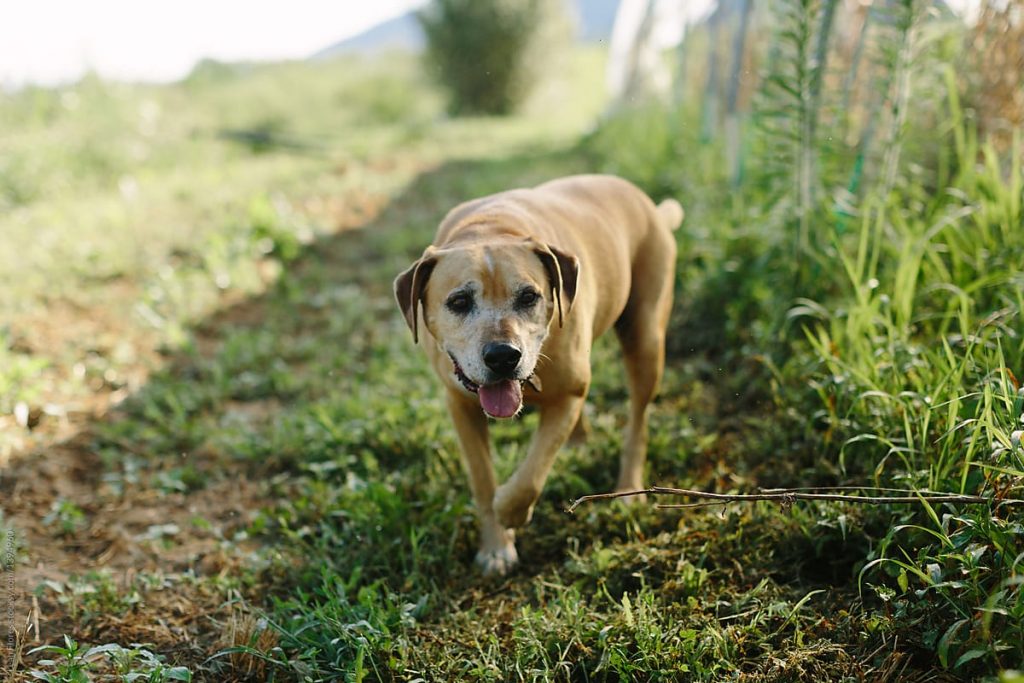Senior dogs whose owners closely monitor their weight and keep them active and properly conditioned are shining examples of how growing older can be a healthy progression of life.
Fortunately, there are ample opportunities today for older dogs to participate in activities they enjoyed when they were younger – albeit at a modified level for seniors. Some dogs do well in hunting tests and field trials well into their senior years. The same approaches taken with nutrition and conditioning of senior athletes can be applied to normal daily life if you plan to increase the length or intensity of walks, runs or play sessions with your older dog.
The secret to success involves tailoring a conditioning program to the needs of an individual dog. Even before training begins, it is important to take your dog for a thorough veterinary checkup. For dogs who participate in seasonal activities, preseason training should begin several weeks sooner than normal to allow a senior dog time to rebuild muscle strength and stamina.
Why have a Vet checkup?
Some dogs love their activities so much, they could be a detriment to themselves. Dogs that have some orthopaedic problems or are suffering from osteoarthritis may not be ideal for participating in intense competitive events like field trials.
A thorough veterinary examination should be the first step in determining whether an older dog is healthy to participate in sports or start a new or increased exercise routine. The examination is likely to include a complete blood count and thorough physical examination. Radiography and diagnostic ultrasounds may be warranted if there are signs of potential problems.
It helps to consult a veterinarian who is well-versed in musculoskeletal anatomy and gait analysis and has a good working knowledge of canine sports to give advice about the suitability of these activities to individual dogs.
Keeping weight in check
Although keeping dogs fit for life should be the goal, many senior dogs are less active, which contributes to their being overweight. Extra weight puts undue stress on joints. Keeping a dog in ideal body condition is the best thing for aging companions because it helps a dog perform at his best while staying injury free.
Just as in humans, we know in dogs that obesity, even marginal excess weight, contributes to morbidity in many ways, including increased circulating inflammatory mediators, compounds that can contribute to patients experiencing additional inflammation and therefore pain. Just like in people, it is harder for senior dogs to maintain a lean weight. They experience sarcopenia, the loss of lean muscle mass, and can easily gain weight secondary to having a lower metabolism.
In young dogs, you feed and condition them to try and build mass. In older dogs, you try to diminish the loss. Older dogs need more protein in their diet to maintain the same muscle protein synthesis that occurs in younger dogs. You may need to decrease the fat content due to less activity and to help maintain a good athletic body condition.
Using a body condition score system and recording a dog’s weight can aid in determining the correct proportion of fat and lean muscle mass. A dog should have an hourglass shape when viewed from above, which equates to a score of 4 or 5 on a nine-point body condition score system.
Conditioning is the process of getting a dog’s joints and muscles in shape for a sport or activity. A balance of cardio and strength conditioning is best, as well as addressing areas of weakness. The result of proper conditioning is that a dog is less likely to get hurt when he needs to exert greater physical effort during competition.
Keeping senior dogs active is best for promoting their health and longevity. Proper conditioning and training can help prevent injuries so that you can share your favourite sports and activities together for many years to come.
Tips on training Senior Dogs
- Schedule a checkup with your veterinarian before beginning a conditioning program to ensure your dog is physically fit.
- Begin a good nutrition program six to eight weeks before training starts. Keep in mind senior dogs require more protein for muscle synthesis, and some may need less fat to maintain ideal body condition.
- Keep excess weight off your senior athlete, as it contributes to fatigue and predisposes a dog to muscle and ligament injuries.
- Use common sense when training. Avoid pushing too hard in extremely hot or cold weather. Train on a surface such as grass or ground to minimise stress to the musculoskeletal system.
- Properly warm up and cool down your dog during a workout. Be mindful that senior dogs take longer to warm up, especially if they have osteoarthritis or muscular strains. Spend five to 10 minutes walking and then jogging to warm up the soft tissues (muscles, tendons and ligaments) to help reduce straining. After training, spend five to 10 minutes jogging and then walking to keep blood pumping through the muscles and heart to help flush out toxins built up during exercise.
- During the off-season continue to monitor your dog’s musculoskeletal system at least monthly by having him flex and extend his toes, wrist and elbow. You also should check his gait looking for signs of limping or soreness.








